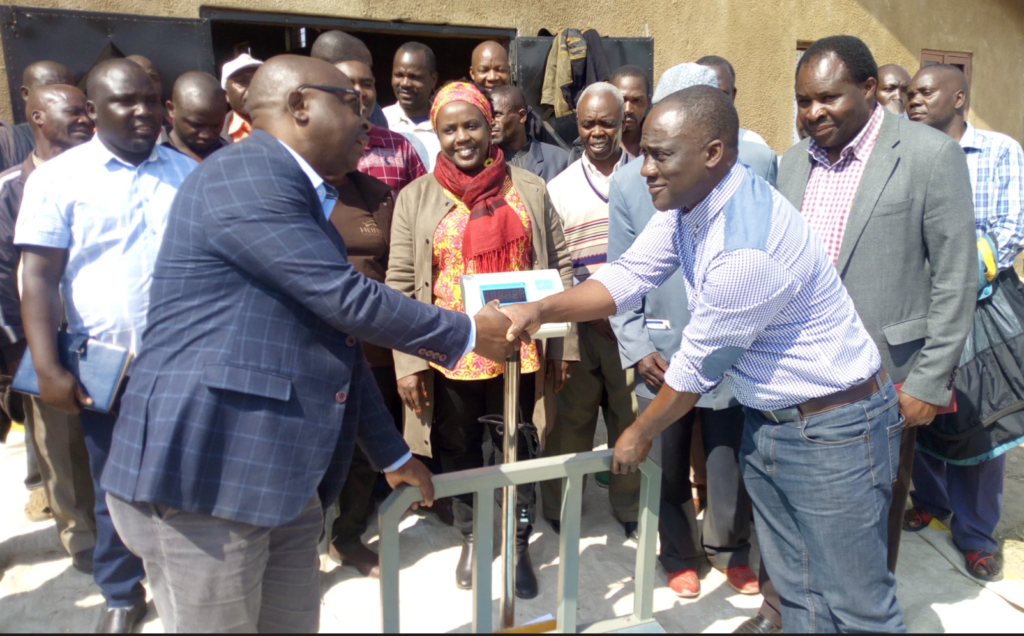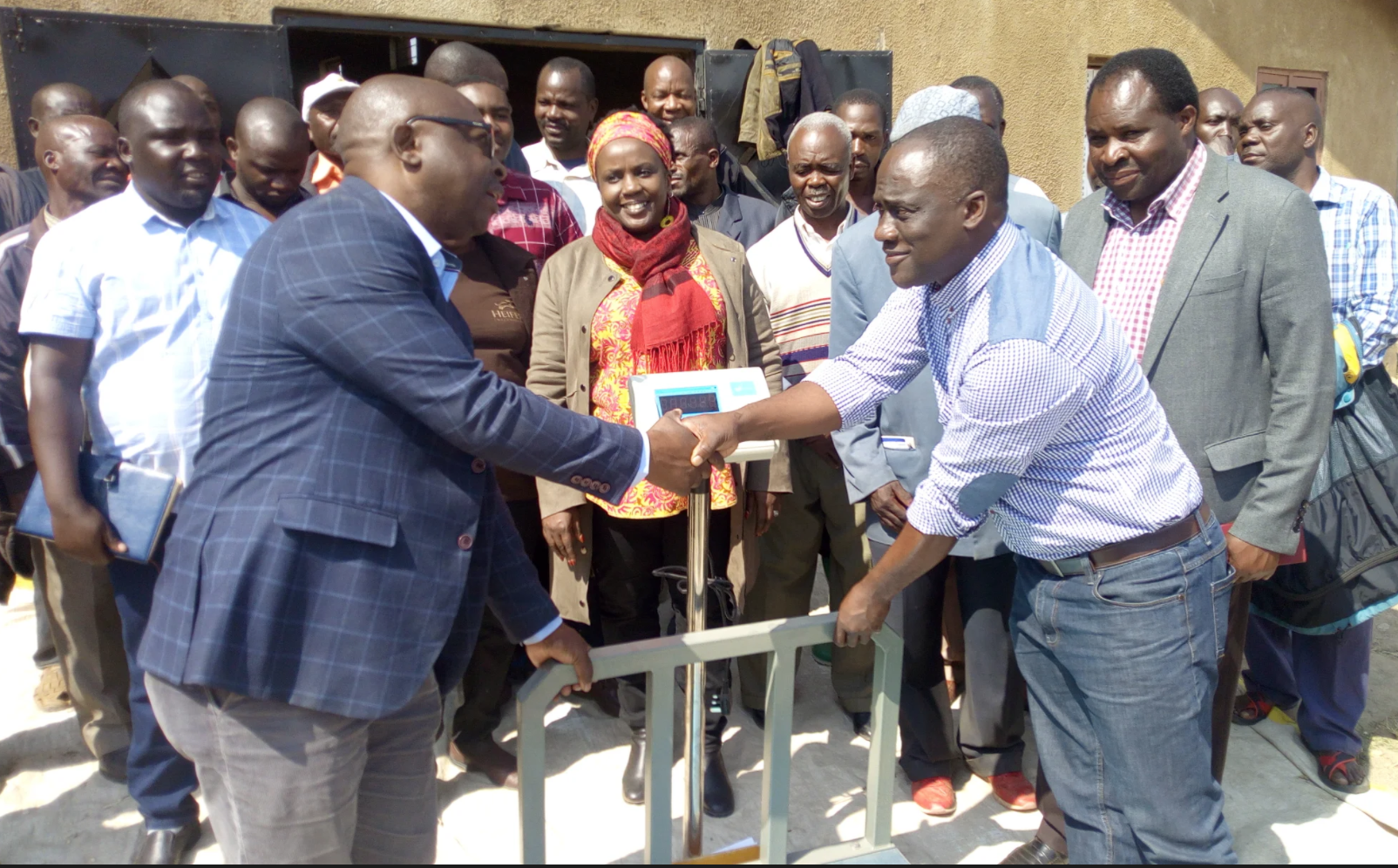DPS-MoA Field Mission to SUKA Consortium 19TH TO 24TH JULY 2020
Tanzania after attaining food self-sufficiency for over a decade is in the race to increase production, develop markets, and multiple agriculture-based industries in the road to fully make agriculture one of the most viable business sectors for pushing up the country to upper-middle-income status, the Deputy Permanent Secretary in the Ministry of Agriculture, Prof Siza Tumbo, has said.
For Tanzania to move up to upper-middle-income status, it needs to attain Gross National Income (GNI) per capita of between $3,956 and $12,235). Currently, the World Bank ranks the Tanzanian economy as a middle-income status.
According to Prof Tumbo, the ongoing endeavors in the implementation of the Agriculture Sector Development Programme II (ASDP II), where regions across Tanzania are rising up to the occasion by increasing agricultural production, is vital in taking the country to the improved economic status.
He was speaking at field tour (19TH TO 24TH JULY 2020) organized by Alliance for a Green Revolution in Africa (AGRA) to inspect the progress of Partnership for Inclusive Agricultural Transformation in Africa (PIATA) supported projects (popularly known as PIATA-TIJA or solution-based agriculture) in Rukwa and Katavi regions. Similarly, the field mission was aimed to examine the alignment of private investment in relation to ASDP II priorities.
In the tour, Mr. Vianey Rweyendela, AGRA Country Manager (Tanzania) led the deputy PS and diverse agro stakeholders from the private and public sector, as well as civil society to inspect PIATA-TIJA supported agricultural transformation interventions, where he affirmed the potential of Tanzania to increase its stake as the breadbasket of the larger East and Southern African regions and even the continent.
AGRA support in line with the government of Tanzania’s ASDP II
He assured that AGRA support was in line with the government of Tanzania’s ASDP II implementation plan, which is transforming the country’s agricultural systems and increasing the productivity and income of smallholder farmers.
AGRA through PIATA-TIJA for the last 3 years has been “Promoting Market Led Approach to Improve Profitability of Maize, Beans and Rice Value Chains in Sumbawanga Cluster (Rukwa and Katavi Regions), which has positively impacted over 127,000 smallholder farmers, in enabling them to increase their capacities for market-led production while reducing shocks and stresses across the whole agricultural value chain.
PIATA-TIJA resource partners include Bill & Melinda Gates Foundation (BMGF); Rockefeller Foundation (RF); United States Agency for International Development (USAID), Department for International Development (DFID), and German Federal Ministry for Economic Cooperation and Development (BMZ).
ASDP II implementation to every region in Tanzania beyond food self-sufficiency
Prof. Tumbo said in implementing ASDP II the government was striving to push every region in Tanzania to move beyond food self-sufficiency to expanding the local and export market agribusiness capacities.
The deputy PS said the government has put in place great transport and energy infrastructure (road, rail, electricity and water) to up inter-region connectivity for trade as well as reaching out to neighboring nations, which has lowered the costs of doing business and opened new possibilities for exporting agriculture produce and processed products.
He commended AGRA for PIATA TIJA program for endeavors in supporting agriculture at grassroots, through its partnership programs that largely involves bringing the public and private sector together for creating increased value along the agriculture value chain, including processing and creation of new markets.
He noted that AGRA and other development partners have been helpful in supporting the development of improved policies for agriculture and as well as supporting public and private institutions, including farmer’s organizations to up agriculture stakes across Tanzania.
“AGRA is supporting Tanzania through ASDP II, which is our current roadmap for agriculture development,” he noted.
At Sibwesa ward, Katavi, the delegation assesses ongoing produce aggregation activities on a rehabilitated warehouse in Nkungwi Village, where Village Based Advisor (VBA) model has transformed farmers to become more efficient and has led to small scale farmers adopting new technologies. MIICO Development Agency Managing Assistant Director, Ms. Catherine Malaga, said the implementation of the program has helped to increase the number of women and youth in farming as a business.
According to AGRA Program Officer, for SUKA Consortium, Mr. Japhet Laizer, systemic changes along the value chain through consortium intervention in Rukwa and Katavi improved structural markets ways which helped to increase incomes for smallholder farmers.
“About 338 Hub/retail agro-dealers were supported with accreditation training from government regulatory bodies such as Tropical Pesticides Research Institute (TPRI, Tanzania Official Seed Certification Institute (TOSCI) and Tanzania Fertilizer Regulatory Agency (TFRA). On the same note, 150 rural agro-dealers were supported to open new agro-shop and rehabilitate deteriorated one through matching funds to improve accessibility, availability of agricultural in rural areas, and reduce the distance that farmers travel to access agricultural in town”.
Quality of produce aggregated through the structural market have been increased from 9,533 MT in 2017 when the program started to 26,968MT 2018/19 attract a total of US$65,866,700 worth of produce transacted through the structural market since the inception of the program (2017) to date as a result of consortium interventions.
“We supported the construction of 5 new warehouses (3 Rukwa, 2 Katavi) with the capacity of 660MT each to reduce post-harvest losses, ease aggregation, and enhance marketing activities to happen. Similarly, refurbished more than 29 warehouses owned by both public and private sectors to connect upstream and downstream midstream of the food value chain.
Transformation and improved livelihoods of hardworking smallholder farmers realized
“We have seen the partial transformation and improved livelihoods of hardworking smallholder farmers after adapting market-led agricultural production while reducing shocks and stresses, notes Mr. Laizer.
“At the end of the day, there is Increased staple crop productivity for smallholder farmers; we have strengthened and expanded access to output markets, played a role in reducing farm losses, and increased farm-gate prices to smallholder farmers he notes.
The program trained 709 VBA’s to cascade improved technologies to smallholder farmers for which the same model was adopted by other development partners (HELVETAS) to promote sales and adoption of hermetic technologies to smallholder farmers for synergy and leveraging. “Get connected to 30 VBA’s increased my sales volume of agricultural inputs and expanded distribution channel to save an additional 13 retail agro-dealers says Hub Agro-dealer Mrs. Bwilo”
The multiplier effect of AGRA investment stimulated to an increased number of private investments
The multiplier effect of AGRA investment stimulated to an increased number of private investments on storage facilities to an additional 25 and a huge increase in collective marketing through aggregation centers from 8,000 MT in 2017 to 25,929MT in 2019 that were tracked, he said.
The number of new storage facilities and SME’s led Agro-processors rose from 28 to 63 for instance, from ten sampled SME’s, the trajectory from 2017 to 2019 demonstrates a tremendous increase of paddy as the result of renovated warehouses. For the two years consecutive there is an average increase of 1,204 MT of paddy aggregated and processed which is 85 percent as the results of increased storage space. This also translates an increased number of farmers benefiting from the same pool of additional investments.
In SUKA Consortium, Fantashiru Enterprises Company, thanks to the program, the company managed to increase processing capacity from 15MT to 25MT per day with annual aggregation hiked to 5,000 MT.
Mr. Anwary M. Said, the firm’s managing director, noted that the program helped to do away with maize post-harvest loss after supporting improved infrastructure and handling procedures at the facility/premises. It also helped his company to strengthen business and working relationships with farmer organizations, thanks to reduced transaction costs and market risk. Previously, the company had lost TZS14,000,000 to middlemen who disappeared with the money. “We now enjoy working and fetching farm produce direct from farmer organizations who also improved the quality of the grain,” he noted
Nondo Investors Company Ltd from SUKA consortium is grateful to PiATA TIJA for acceleration and push factor on market facilitation to farmer organization which increased aggregated and processed volume to 1,200MT of paddy and 600MT of paddy towards the end of 2019. Increased processing capacity from 25 to 30 tons per day on maize, the additional storage capacity of 1,000 MT as the result of the rehabilitation of the warehouse. Meanwhile, technical skills imparted on the fabrication of Multi-thresher technology and now enjoying the provision of simple post-harvest equipment and services in the Katavi region.
AGRA in Tanzania works with the Government and various strategic partners to increase incentives for private sector participation and investment in the agricultural sector while enhancing access to finance and markets; the adoption of climate-smart technologies and the use of inputs (seeds and fertilizer).
AGRA strategy and support for Tanzania from 2017 to 2021 seeks to bring technologies, partnerships, and models to scale up for competitive and inclusive agriculture in Tanzania and in essence catalyze and sustain an inclusive agricultural transformation to increase incomes and improve food security for smallholder farming households.

End
